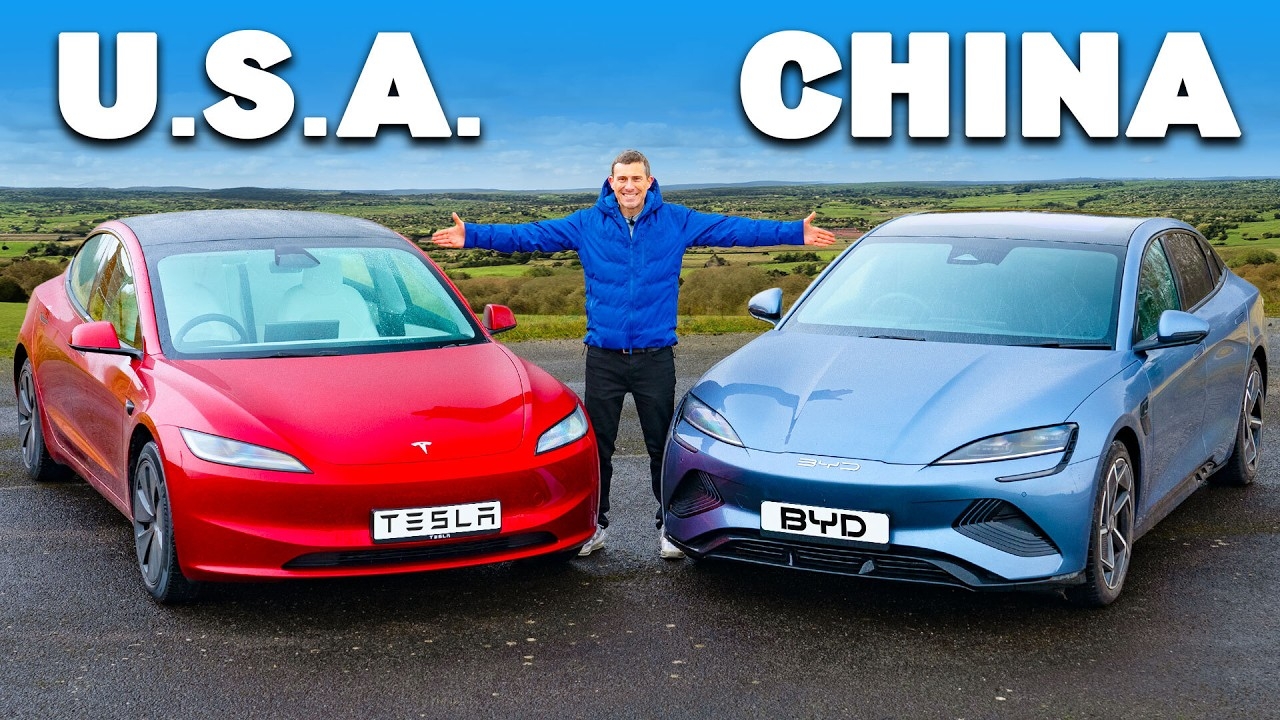BYD Seal vs Tesla Model 3 The electric vehicle market continues to intensify as Chinese manufacturer BYD challenges Tesla’s dominance with the compelling Seal saloon. With UK government support through various EV charging grants making electric vehicle ownership more accessible, choosing between these premium electric saloons has become increasingly important for British drivers.
Pricing and Government Incentives
The Tesla Model 3 maintains a competitive edge in entry-level pricing, starting from £39,990 for the rear-wheel-drive variant. The BYD Seal commands a premium at approximately £46,000 for comparable specification. However, dual-motor variants narrow this gap significantly – the Model 3 Long Range costs £49,990 while the BYD Seal AWD is priced around £48,700.
British buyers can benefit from government EV charge point grants providing up to £350 towards installation costs, though direct vehicle purchase grants are now limited to specific categories like wheelchair-accessible vehicles.
Design Philosophy and Aesthetics
The Tesla Model 3’s 2023 refresh introduced sleeker headlights and refined bumper styling, maintaining its minimalist Californian aesthetic. The BYD Seal takes a more dramatic approach with flowing bodylines and distinctive LED signatures that some critics suggest echo Tesla’s design language.
Both vehicles prioritise aerodynamic efficiency, though the Seal’s more expressive styling details – including pronounced side creases and subtle rear fins – give it a more dynamic visual presence on British roads.
Interior Technology and Practicality
Cabin Design and Materials
Tesla’s minimalist philosophy dominates the Model 3’s interior, featuring a 15.4-inch central touchscreen controlling virtually all functions. The 2023 update improved material quality significantly, though the controversial removal of traditional stalks for a touchscreen gear selector continues to divide opinion.
The BYD Seal offers a more conventional approach with physical controls alongside its rotating 15.6-inch infotainment display. Material quality matches Tesla’s standards while providing greater ergonomic familiarity for drivers transitioning from conventional vehicles.
Infotainment Systems
Tesla’s software ecosystem remains superior, offering responsive graphics and over-the-air updates. However, the absence of Apple CarPlay or Android Auto integration frustrates many users. The BYD system, while featuring smartphone connectivity, lacks the sophistication and user-friendliness of Tesla’s interface.
Performance and Range Comparison
| Specification | Tesla Model 3 RWD | Tesla Model 3 AWD | BYD Seal RWD | BYD Seal AWD |
|---|---|---|---|---|
| Price | £39,990 | £49,990 | £46,000 | £48,700 |
| Range (WLTP) | 323 miles | 421 miles | 354 miles | 323 miles |
| Power | 283 hp | 456 hp | 312 hp | 523 hp |
| 0-60 mph | 6.1 seconds | 4.2 seconds | 5.9 seconds | 3.8 seconds |
| Top Speed | 125 mph | 145 mph | 112 mph | 124 mph |
Driving Dynamics
The Tesla Model 3 delivers its characteristic “go-kart” handling with precise steering and exceptional straight-line performance. Even on eco-focused tyres, grip levels remain impressive for spirited driving on country roads.
The BYD Seal prioritises comfort over outright handling precision. While less engaging than the Tesla, its softer suspension setup provides superior ride quality over Britain’s deteriorating road surfaces. Experienced drivers can still exploit the Seal’s rear-biased dynamics for entertaining moments.
Charging Infrastructure and Practicality
Tesla’s Supercharger network remains a decisive advantage, offering reliable high-speed charging across the UK. With government statistics showing 60,918 workplace charging sockets installed through various schemes, both vehicles can benefit from expanding charging infrastructure.
The BYD Seal represents impressive value with strong performance, attractive styling, and competitive pricing. However, the Tesla Model 3’s superior infotainment system, established charging network, and proven reliability make it the more compelling choice for most British drivers.
For buyers prioritising comfort and unique styling, the BYD Seal offers genuine appeal. But Tesla’s technological ecosystem and infrastructure advantages justify the Model 3’s position as the benchmark electric saloon.
Frequently Asked Questions
Q: Are there government grants available for buying these electric cars?
A: Current UK grants focus on charging infrastructure rather than vehicle purchases, with up to £350 available for home charger installation.
Q: Which car offers better range for long-distance driving?
A: The Tesla Model 3 Long Range provides up to 421 miles of range, significantly outperforming the BYD Seal’s maximum 354 miles.
Q: How do charging costs compare between the two vehicles?
A: Both vehicles have similar energy efficiency, with Tesla’s Supercharger network often offering competitive pricing and faster charging speeds.
Also Read:-2024 Toyota Corolla ZR Hybrid Review: Efficient and Refined Ride

